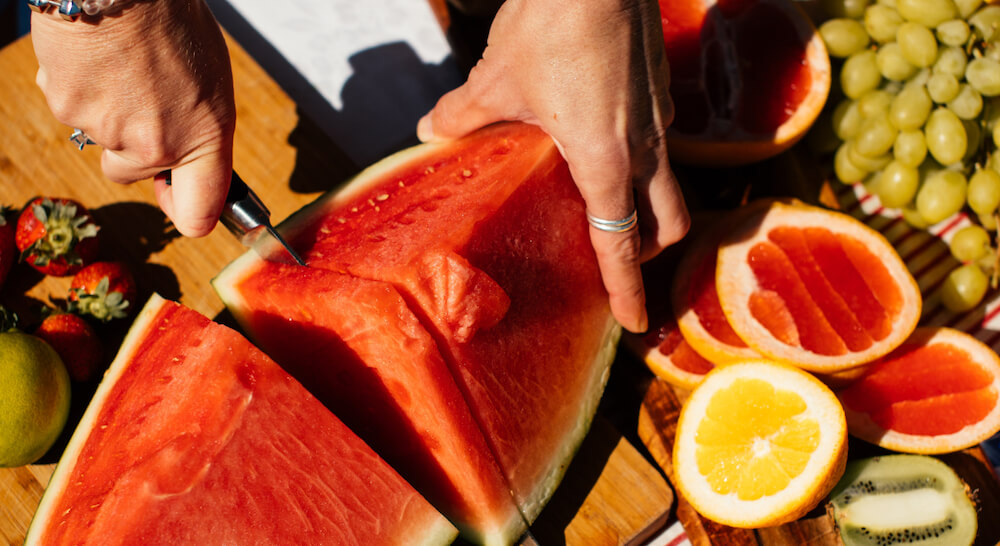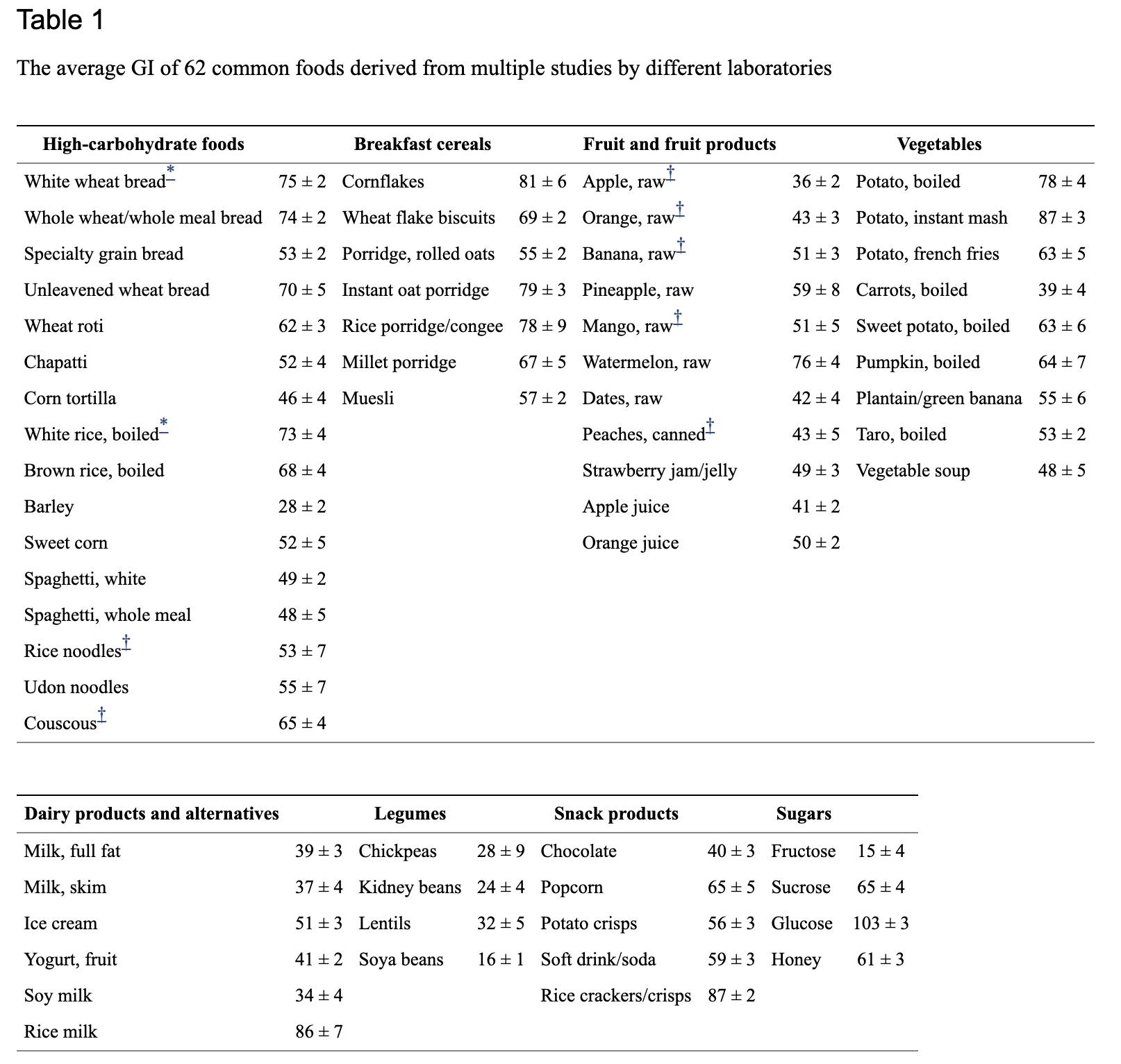Glycemic Index vs Glycemic Load: What’s the Difference?
The numbers you need to make the best food choices for your body.
April 20, 2021

Article Summary: Glycemic Index vs Glycemic Load
When it comes to making food choices, there are a ton of things you’re probably thinking about, from calories to macronutrients to portion size. If you’re trying to keep your blood sugar in check, you may have been told by a doctor or nutritionist to focus on foods that are low on the glycemic index or have a low glycemic load. What do those terms actually mean, and why are they important? We’ll decode them all here.
Glycemic Index (GI)
The glycemic index is a scale, ranging from 0-100, that assigns carb-containing foods with a specific score based on how much they spike blood sugar levels. Foods are typically categorized as low, medium, or and high GI:
Low GI: 0 -55
Medium GI: 56-69
High GI: 70-100
Unfortunately, there isn’t one simple number that lets you know that you’re metabolically healthy or you’re not. Instead, doctors look at a series of measures, typically including these five:
Glycemic Load (GL)
Glycemic Load is GI’s more specific cousin. Where GI tells you which foods will spike your blood sugar levels more than others, glycemic load tells you how quickly a food causes glucose to enter the bloodstream and how much glucose you’ll get per serving. So instead of just having the relative GI number, GL allows you to more specifically understand how a food will affect your blood sugar levels by factoring in the number of carbs per serving. GL foods, like GI foods, fall into three categories:
Low GL: 10 or less
Medium GL: 11-19
High GL: 20 or more
Glycemic Index vs Glycemic Load: Which one should you track?
The short answer for glycemic index vs load: Check both.
If you’re trying to make smart food choices, it’s hard to get enough information from one without the other. Some foods may have a high GI but a low GL, like watermelon, for example. Yes, it has a GI over 70, but the GL is very low (just 4) because you’d have to eat a ton of it to see a spike in blood sugar. Even those with diabetes can eat watermelon, as long as they don’t gobble down 5 slices. This international database created by researchers at the University of Sydney in Australia allows you to check both GI and GL. But we get it: Running the numbers at every meal is a little much. When in doubt, know that most low GI foods will likely rank well in GL as well, if you don’t go overboard with portions But try to be aware of both numbers for the foods you eat most often.
GI Score of Common Foods
Foods that score lower on the GI scale don’t cause your blood sugar levels to rise as much as those that rank high (for context, pure glucose ranks at 100). High GI foods, for instance, are typically packed with refined carbs and sugar, while high-fiber foods tend to have a low GI score because it takes your body longer to break them down (so sugar doesn’t rush into the bloodstream as quickly).
While GI is mainly driven by a food’s carb count, a few other factors come into play too, including:
- Ripeness (riper fruit has a higher GI)
- Cooking method (food that is cooked for longer can have a higher GI)
- What type of sugar the food contains (fructose has a lower GI than maltose, for instance)
- How processed the food is (the more processed, the higher the GI
Knowing the GI score of some of your favorite foods can help you start making smarter choices. If you notice most of your diet consists of high-scoring, carb-heavy picks, you’ll want to consider substituting them with foods that are lower on the scale. Here, the GI score for 62 common foods:

Source: Diabetes Care
A GI- Focused Diet
We’ve covered how tracking Glycemic Index and Glycemic Load can help you keep blood sugar levels in check, but how much does it matter when building a well-rounded meal plan? If you’re dealing with prediabetes or diabetes, or simply trying to keep your metabolism in good shape, tracking the GI and GL scores of the foods you eat may become incredibly important. Both can help you keep your blood sugar levels relatively stable (not swinging too high or low after every meal), and that’s not all. “Making low GI ingredients your go-to building blocks for meals and snacks helps with more than just glucose control,” says Maziyar Saberi, PhD, a systems physiologist and January AI’s Chief Scientific Officer. “You’ll also feel greater energy, less hunger, and more stable moods, among other benefits.”
Research has shown that diets focused on low GI foods can help reduce blood sugar levels in those with type-2 diabetes. In fact, a 2019 study, “Low-glycemic index diets as an intervention for diabetes,” in the American Journal of Clinical Nutrition reviewed 54 randomized clinical trials and found that low GI diets were effective in reducing A1C levels as well as fasting glucose levels.
With results like these, it would seem like a no brainer to follow a low GI diet, especially if you have diabetes or prediabetes, right? “Definitely,” says Saberi, “but don’t forget about the fats, proteins, and other nutrients. For total metabolic health, all your food ingredients should work together, like an orchestra.” So protein, fiber (a healthy kind of carb), and fat all matter, too. While swapping high GI foods for lower ones, like white bread for whole wheat, makes sense, you have to put it in context of everything you’re eating. For instance, ice cream can be relatively low on the glycemic index, but it’s of course not a food you want to start eating every day because it’s high in fat.
When crafting the best diet for you, talk to a nutritionist about how to think about the GI scores of the foods you’re eating. If you’re using a continuous glucose monitor (CGM) to track your blood sugar levels, see if your readings match what you eat. Do they go up higher when you have high GI foods compared to low GI foods? Use GI scores as one data point when deciding the right combination of foods for you.
Is Glycemic Index or Glycemic Load better than counting calories for weight loss?
So after all this talk about GI and GL scores, you may be wondering where calories factor in. After all, if you’ve been trying to lose weight as part of your overall diabetes management plan, you’re probably counting calories too.
We’re not here to tell you calories don’t matter, because they do. “While better nutrition is a powerful tool for managing health, we have to look at our total caloric intake, and balance it with the calories we spend, usually through physical activity,” says Saberi. “Excess calories, even from the best of sources, can lead to weight gain and ultimately insulin resistance.”
That said, our “calories in vs. calories out” set up for weight loss is overly simplistic and doesn’t factor in each person’s unique response to food. Here’s what it can overlook, from a blood sugar perspective:
- When your body isn’t regulating glucose properly (as with diabetes and prediabetes), you can develop insulin resistance.
- Insulin resistance means that your cells stop responding to insulin effectively, so they don’t readily take up the glucose circulating in your bloodstream.
- As a result, more glucose may stay in the blood, leaving you with chronically high blood sugar levels.
- High blood sugar in the blood signals the pancreas to churn out even more insulin.
- A drop in insulin levels signals the body to use burn up fat stores for energy, but when insulin levels stay high, your body never gets that message. This can make weight loss incredibly difficult even if you’re diligently counting calories.
When you keep blood sugar levels more stable, on the other hand, you reduce the risk of developing insulin resistance. That’s good for your health in general, but particularly helpful for weight loss, because it gives your body the chance to turn to fat stores for energy.
Bottom line: If no amount of calorie tracking has helped you lose weight, focusing on the types of foods you’re consuming—high vs low GI and GL—may be the missing key. Talk to your doctor or nutritionist about whether tweaking your diet to include more low GI foods might help nudge the scale in the right direction.